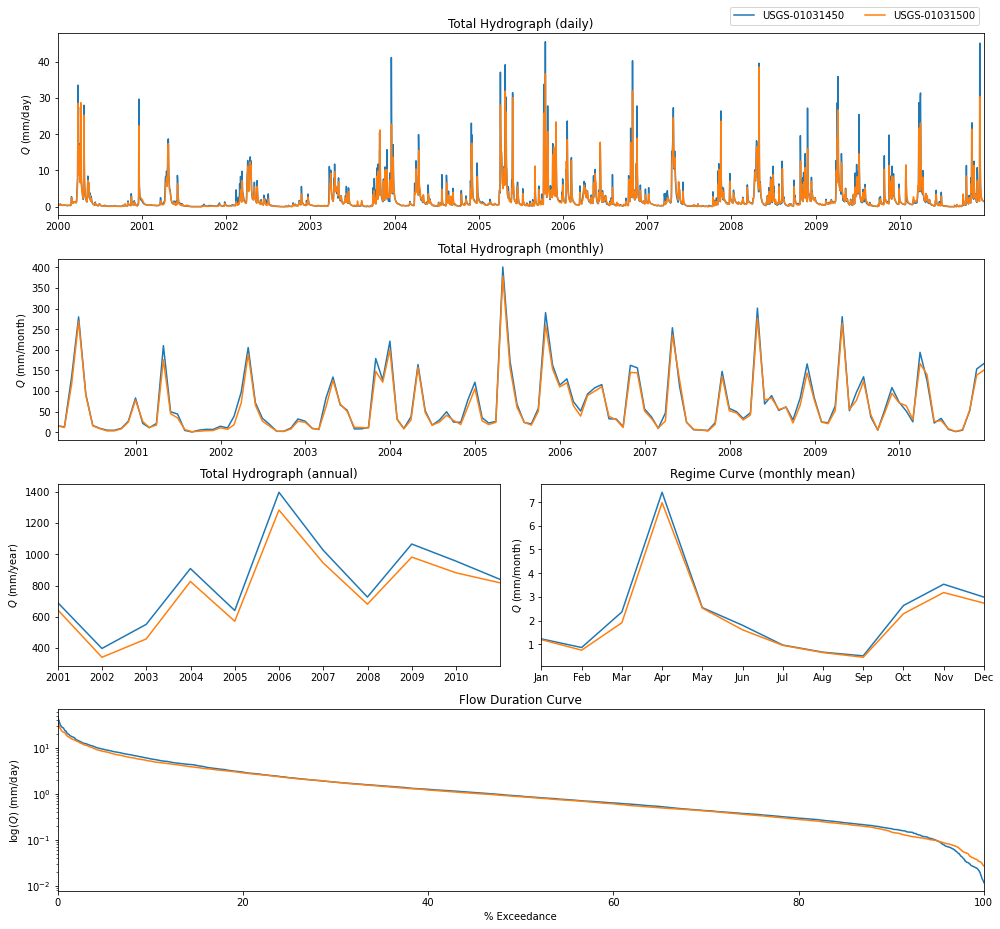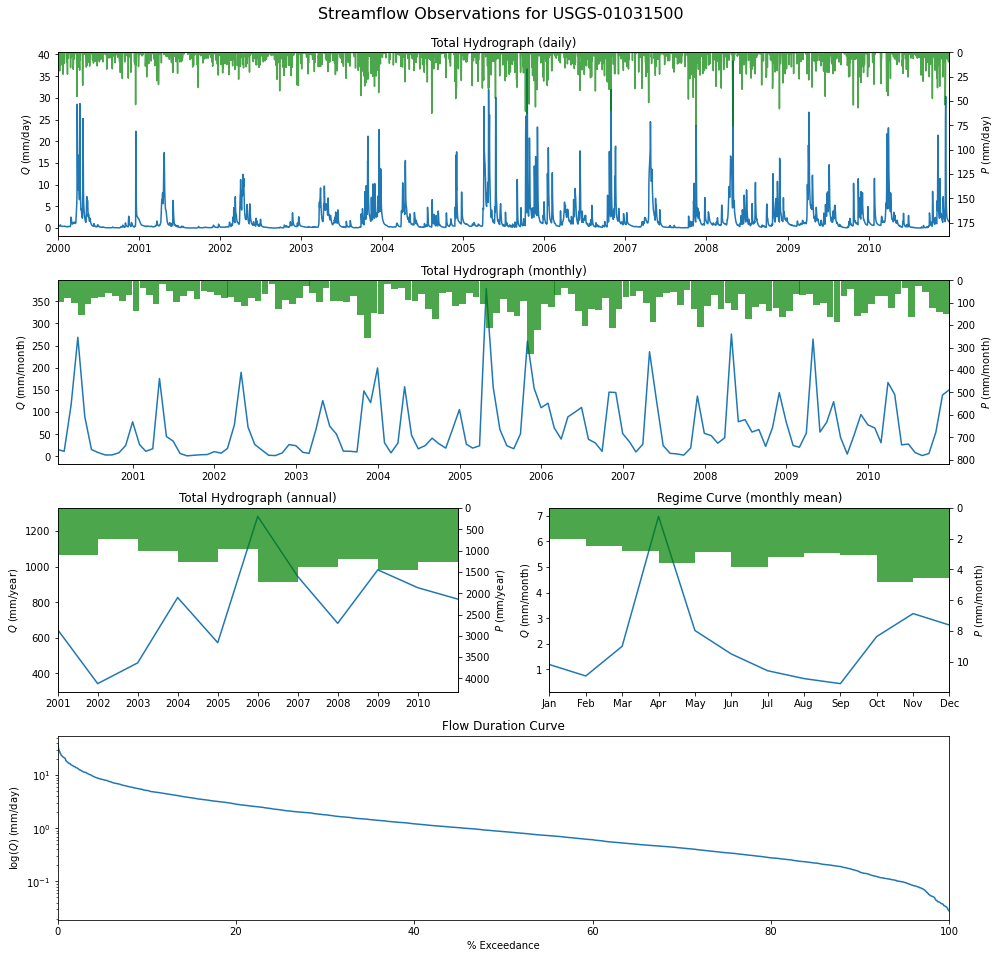This page was generated from examples/nwis.ipynb. Interactive online version:
NWIS and Plotting¶
[1]:
import pydaymet as daymet
from pynhd import NLDI
import pygeohydro as gh
from pygeohydro import NWIS, plot
We can explore the available NWIS stations within a bounding box using interactive_map function. It returns an interactive map and by clicking on an station some of the most important properties of stations are shown so you can decide which station(s) to choose from.
[2]:
bbox = (-69.5, 45, -69, 45.5)
gh.interactive_map(bbox)
[2]:
We can more information about the station using the get_info function from NWIS class.
[3]:
nwis = NWIS()
info_box = nwis.get_info(nwis.query_bybox(bbox))
Now, let’s select all the stations that their daily mean streamflow data are available between 2000-01-01 and 2010-12-31.
[4]:
dates = ("2000-01-01", "2010-12-31")
stations = info_box[
(info_box.begin_date <= dates[0]) & (info_box.end_date >= dates[1])
].site_no.tolist()
One of the useful information in the database in Hydro-Climatic Data Network - 2009 (HCDN-2009) flag. This flag shows whether the station is natural (True) or affected by human activities (False). If an station is not available in the HCDN dataset None is returned.
[5]:
info = nwis.get_info(nwis.query_byid(stations), expanded=True)
info.set_index("site_no").hcdn_2009
[5]:
site_no
01031450 False
01031500 True
Name: hcdn_2009, dtype: bool
We can get the daily mean streamflow for these stations using the get_streamflow function. This function has a flag to return the data mm/day rather than the default cms which is useful for hydrolgy models and plotting hydrologic signatures.
[6]:
qobs = nwis.get_streamflow(stations, dates, mmd=True)
Then we can use the signatures function to plot hydrologic signatures of the streamflow. Note that the input time series should be in mm/day. This function has argument, output, for saving the plot as a png file.
[7]:
plot.signatures(qobs, output="../_static/example_plots_signatures.png")

This function also can show precipitation data as a bar plot. Let’s use PyDaymet to get the precipitation at the NWIS stations location.
[8]:
sid = "01031500"
coords = tuple(info[info.site_no == sid][["dec_long_va", "dec_lat_va"]].to_numpy()[0])
prcp = daymet.get_byloc(coords, dates, variables="prcp")
[9]:
plot.signatures(
qobs[f"USGS-{sid}"], prcp, title=f"Streamflow Observations for USGS-{sid}"
)
